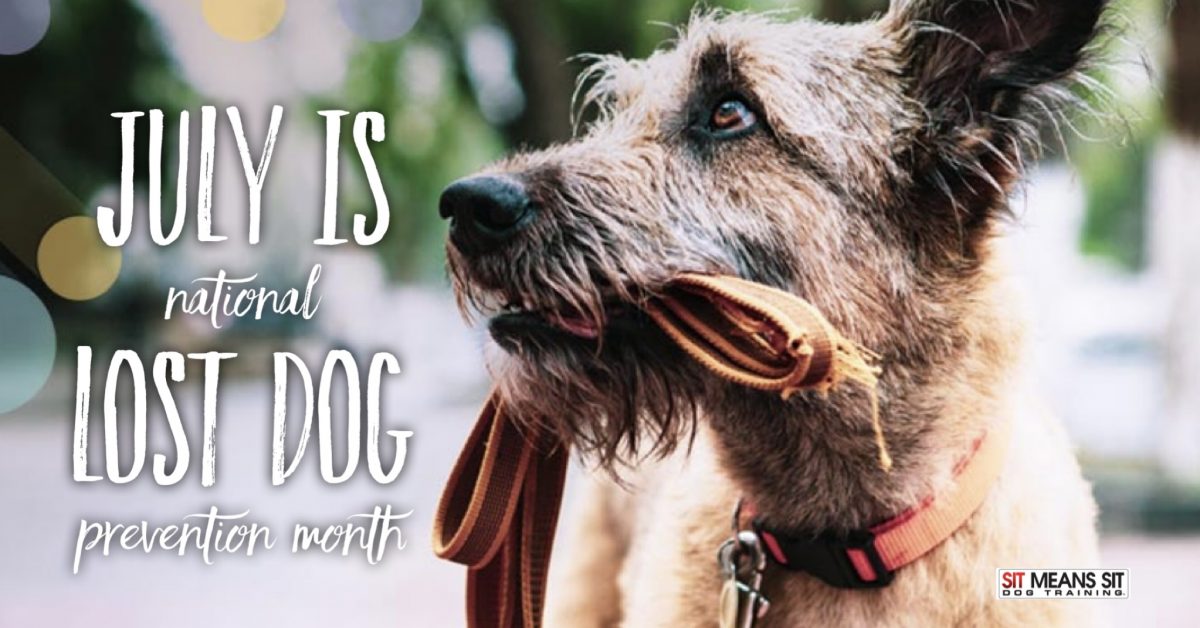
National Lost Dog Prevention Month: 5 Tips That Help Keep Your Dog Home
One of a dog parent’s biggest fears will always be losing their pet. Losing a pet is like losing any loved one, and it’s an experience no one should ever have to go through. July is National Lost Pet Prevention Month and serves as an important reminder to make sure our pets stay safe and don’t get lost.
Even if you believe you’re the safest pet parent in the world, it’s always smart to make sure you have a checklist to prevent your pet from getting lost, and a plan in place just in case they do!
1. Microchip Your Dog
Thanks to the technology of microchips, many people have been reunited with their lost dogs. If your dog loses their collar and ends up lost, a vet or shelter can scan for the microchip, which will have their name, your contact information, and your primary vet or shelter information. The process for getting a microchip implanted is no more painful than a vaccine, and your dog will have no idea it’s there. Once the chip is placed, it’s critical to keep the registration current with your contact information so a finder can contact you ASAP when your dog is found. Always keep accurate and up-to-date veterinary records on file to ensure there are no issues with reclamation in the event they’re taken to a vet or to a shelter.
2. Use A Secure Collar With Tags
While it may seem obvious, some people forget how extremely vital it is for your dog to not only have a secure collar, but also have an ID tag. Loose collars can fall off and, over time, become torn and wear down. It’s important that you check your dog’s collar to make sure it’s still in proper shape. Also, you don’t want to choke your dog, so be sure to find an even balance between secure and comfortable. ID tags make it very easy for someone to identify your dog and get your contact information immediately on sight. You can buy custom tags online or make them at your local pet store for an affordable price. GPS trackers also help and can hang right with your dog’s regular ID tag!
3. Secure Your Yard & Home
One of the most common ways a dog gets lost is when they escape their yard. There have been plenty of times when people found dogs wandering their neighborhood and mistaken them for strays when really they accidentally just got out of their own property. If you let your dog in the yard, make sure you’ve double-checked the fencing around your property. You want the right height fence depending on the size of your dog so they can’t jump over it or wiggle through it. Even if they can’t jump the fence, your dog still might be able to dig their way out. A good way to prevent this is with rocks or chicken wire lining the bottom of the fence.
4. Consider Spay Or Neuter
Not only is spaying and neutering important to prevent overpopulation and keep more dogs from ending up in shelters, but it’s also key to keeping your pets from wandering off and getting lost. When male dogs aren’t neutered, they have a higher tendency to seek out females because of natural sexual behavior. This means that an un-neutered dog is more likely to wander off from your home and get lost trying to seek out female dogs, leading to more risk of becoming lost. Female dogs will also benefit from spaying, as fewer males will be drawn to them and it greatly reduces the likelihood of reproductive diseases like pyometra.
5. Be Safe In The Car
When traveling with dogs, always be mindful when they’re in the car. When not properly trained or restrained, your dog could easily run off when you open the car door. Some dogs could even escape if you open the window too far. Be aware of your dog’s typical behavior and figure out what works best. Crates and gates are the best in ensuring your pup stays contained in the car. Seat belts are also helpful in making sure your dog is safe and secure. There are several dog seat belts on the market, but be sure to check that they have been safety tested, and rely on online reviews before you make a decision.
We hope these recommendations help you and your family ensure that your dog is safe and sound today and in the future. If we can help with any of your training needs, don’t hesitate to let us know!
